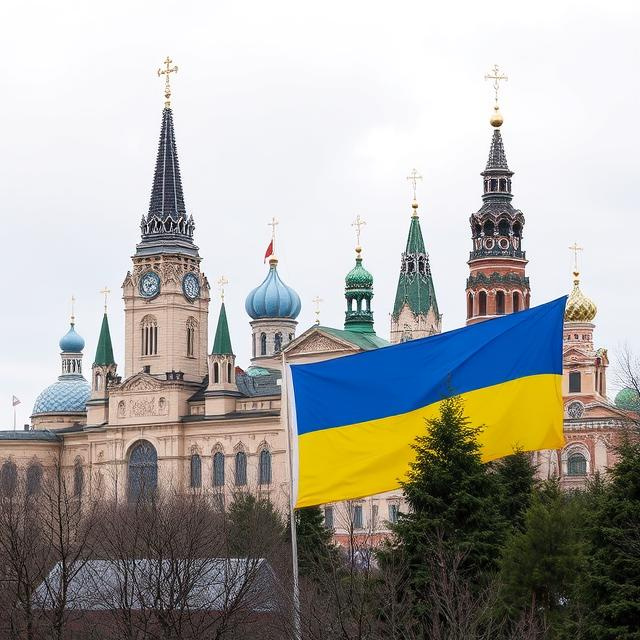
Introduction
The conflict between Russia and Ukraine has reached new heights with recent developments that mark the largest attack by Russia on Ukrainian soil. This sudden escalation is not just a regional conflict but a concern for global political stability. Analysts worldwide are keeping a close watch on the situation as it unfolds, assessing the ramifications for both nations and the broader international community. In this article, we explore the details surrounding Russia’s largest Ukraine attack and provide a comprehensive analysis of the escalating conflict.
Background of the Conflict
The roots of the Russia-Ukraine conflict are deep and complex. Since Ukraine’s independence from the Soviet Union in 1991, relations with Russia have been fraught with tension. This tension reached a peak in 2014 with Russia’s annexation of Crimea, an event that triggered the ongoing conflict in Eastern Ukraine. The war has resulted in thousands of deaths and has displaced millions. In recent years, diplomatic efforts have stalled, and sporadic clashes have persisted.
The Recent Escalation
The latest escalation marks a significant departure from the status quo. Reports suggest that on [insert date], Russia launched a coordinated attack, targeting multiple strategic locations within Ukraine. This assault involved aerial bombings, artillery strikes, and cyber warfare. Early estimates indicate significant damage to infrastructure and civilian casualties.
Significant Developments:
- Massive troop mobilizations along the Ukrainian border.
- Intense artillery barrages in Eastern Ukraine.
- Temporary shutdown of major Ukrainian communication networks due to cyber-attacks.
- Displacement of thousands of civilians seeking refuge in neighboring countries.
Strategic Analysis
Military Strategies
Russia’s military strategy in this recent offensive appears to be a blend of conventional warfare and hybrid tactics. By employing a combination of ground forces, airstrikes, and cyber operations, Russia aims to destabilize Ukrainian defenses swiftly. Target selection also indicates a calculated move to weaken Ukraine’s logistical capabilities and communication infrastructure.
Political Motivations
Several political factors may be driving this unprecedented escalation. Internally, Russia could be aiming to consolidate power and project strength ahead of potential domestic challenges. Externally, demonstrating military might might serve as a warning to NATO and Western countries regarding the continued expansion eastward.
International Reactions
The international community’s response has been swift and varied. Countries across the globe have expressed concern, with many calling for immediate de-escalation. Diplomatic channels are flooded with talks aimed at preventing further escalation.
Key International Responses:
- NATO: Condemned the attack and increased the readiness of its rapid response forces.
- European Union: Urged for immediate ceasefire talks and imposed a new round of sanctions.
- United States: Delivered a stern warning to Russia, promising economic consequences and increased military aid to Ukraine.
- China: Called for diplomatic resolution without directly criticizing Russia’s actions.
Potential Consequences
The implications of this conflict escalation are significant, potentially affecting global economic stability, security dynamics, and geopolitical alliances.
Economic Impact
– Energy Prices: As a significant supplier of natural gas to Europe, Russia’s actions can disrupt energy supplies, leading to increased global energy prices.
– Trade Disruptions: The conflict threatens to disrupt international trade routes, particularly those traversing Eastern Europe.
– Sanctions and Economic Warfare: Escalating tensions can lead to intensified sanctions, affecting global markets and multinational corporations operating within the region.
Geopolitical Implications
The escalation risks reshaping alliances and geopolitical strategies around the world. NATO might reassess its strategic doctrines, while neighboring countries might reconsider their military alliances and neutrality stances.
Potential Shifts:
- Increased military spending and readiness by NATO members.
- Strained relations between Russia and several Western countries.
- Potential realignment of neutral countries in Eastern Europe.
Path to Resolution
Finding a resolution to this heightened conflict remains a challenging task. However, history suggests that diplomacy is the most effective route to peace.
Steps Toward De-Escalation
– Resumption of Diplomatic Talks: Reviving dialogue under international mediation, possibly involving neutral countries, can be a constructive step.
– Confidence-Building Measures: Both sides need to agree on actions that reduce tensions and build trust, such as withdrawing troops from contested borders.
– International Oversight: The establishment of independent monitoring missions can help ensure compliance with ceasefire agreements.
Role of the International Community
It is crucial for the international community to play an active role in de-escalating the conflict. Through concerted efforts, diplomatic pressure, and balanced mediation, a peaceful resolution can be achieved.
Conclusion
Russia’s largest attack on Ukraine signifies a critical juncture in international relations and regional stability. As tensions soar, the path forward requires a delicate balance of diplomacy, strategic restraint, and concerted international effort. While the current situation is dire, history has shown time and again that peaceful resolutions are possible when the global community unites toward a common goal. As events unfold, vigilance and commitment to peaceful dialogue remain imperative to prevent the situation from spiraling into a larger conflict with devastating consequences for all involved.





